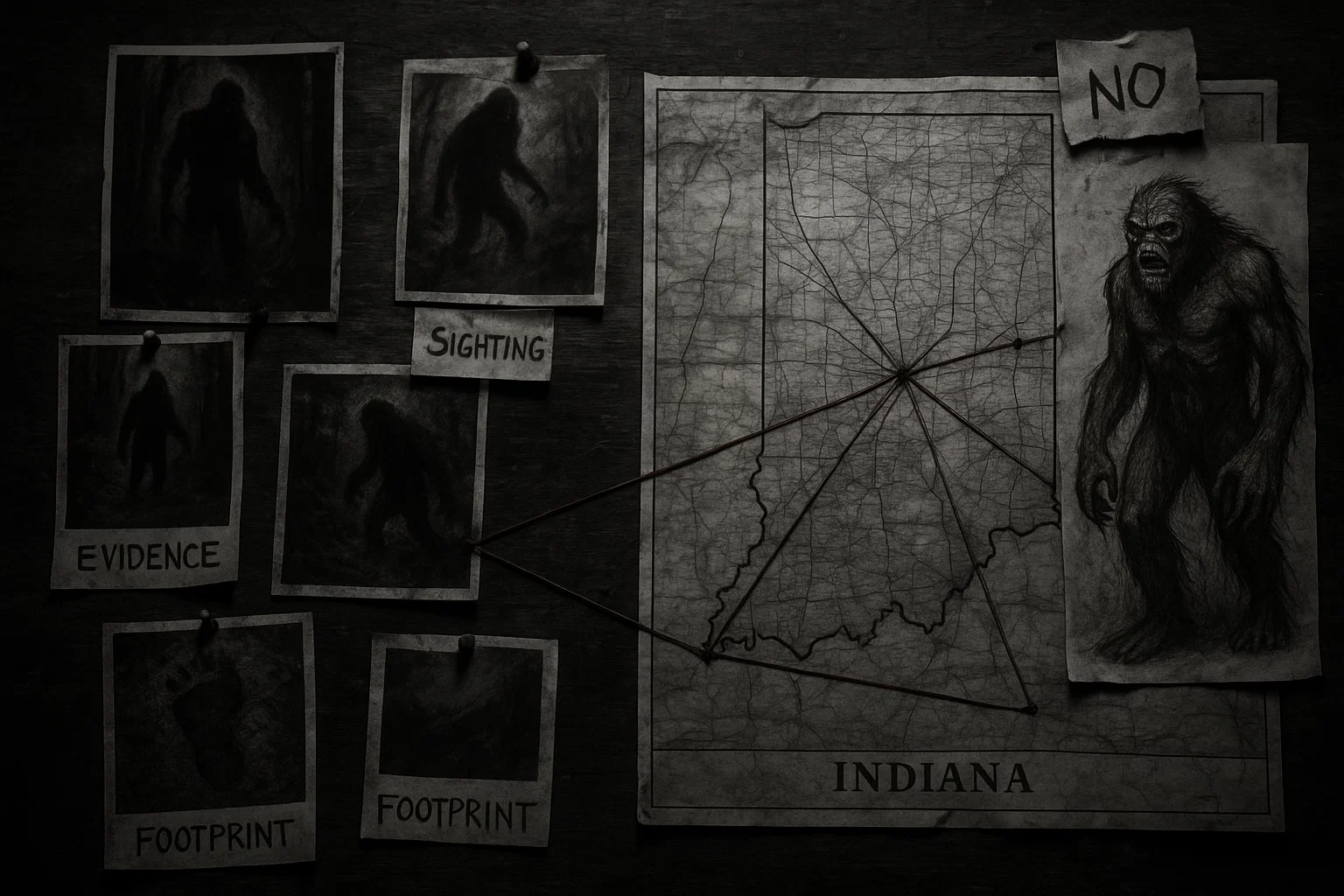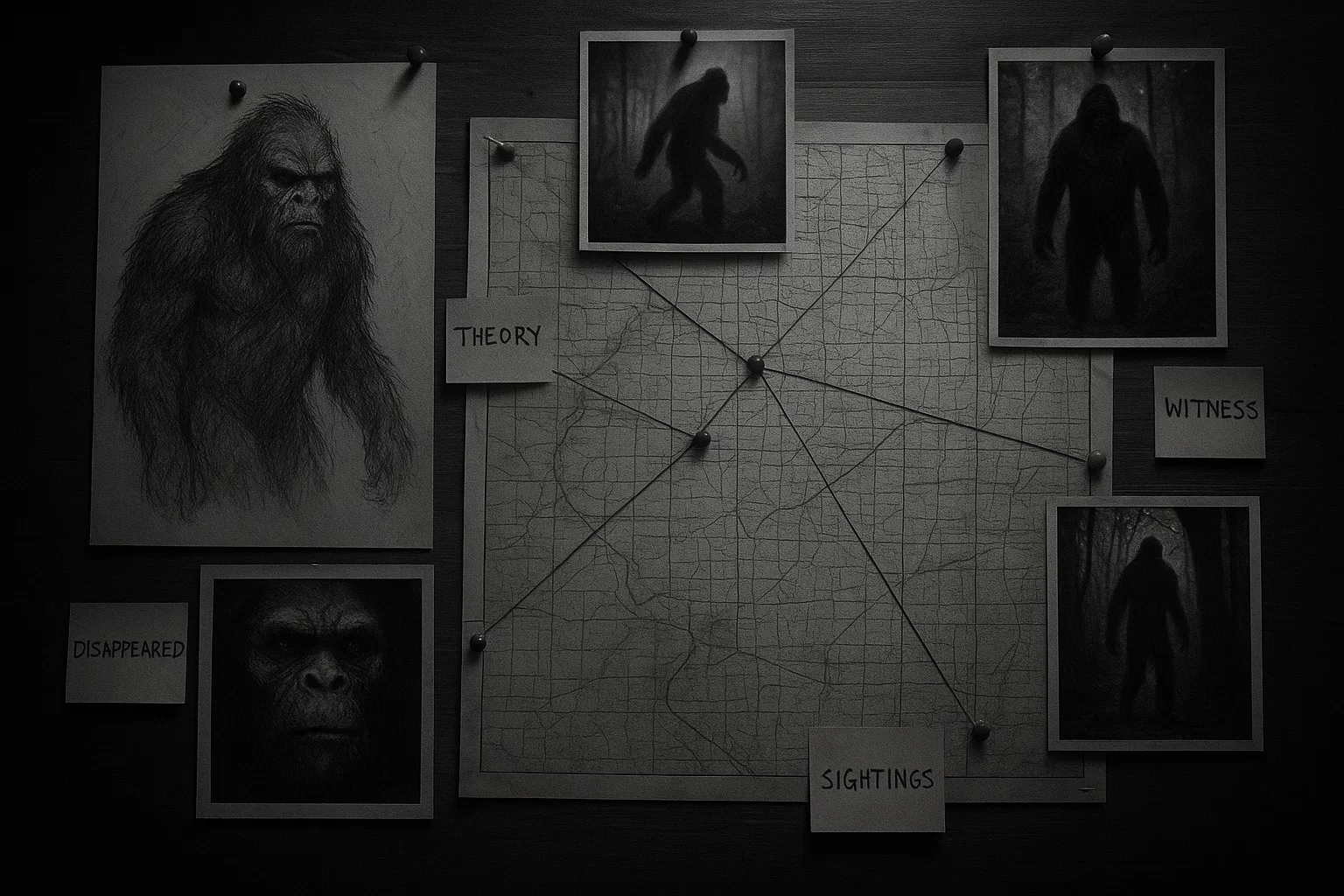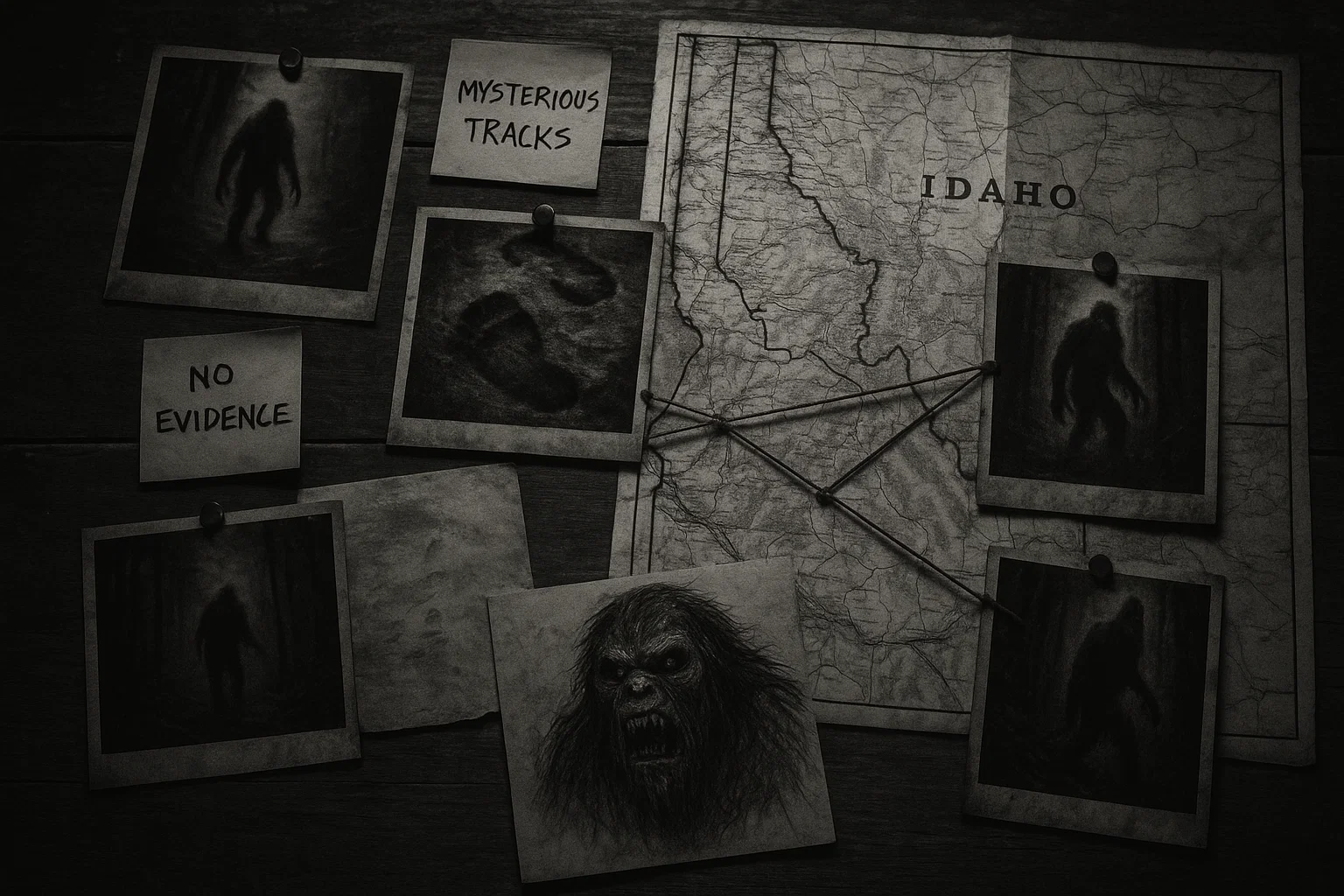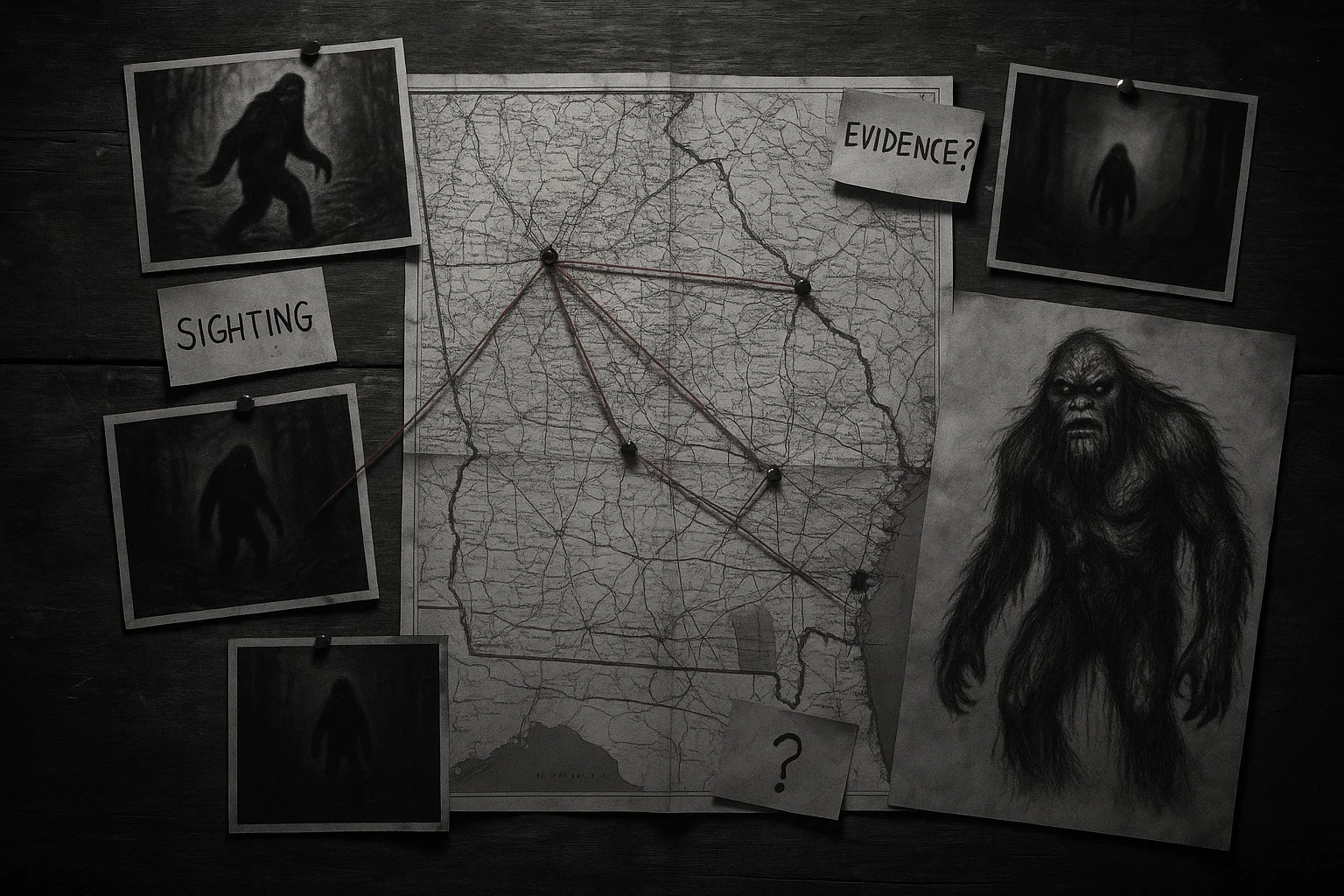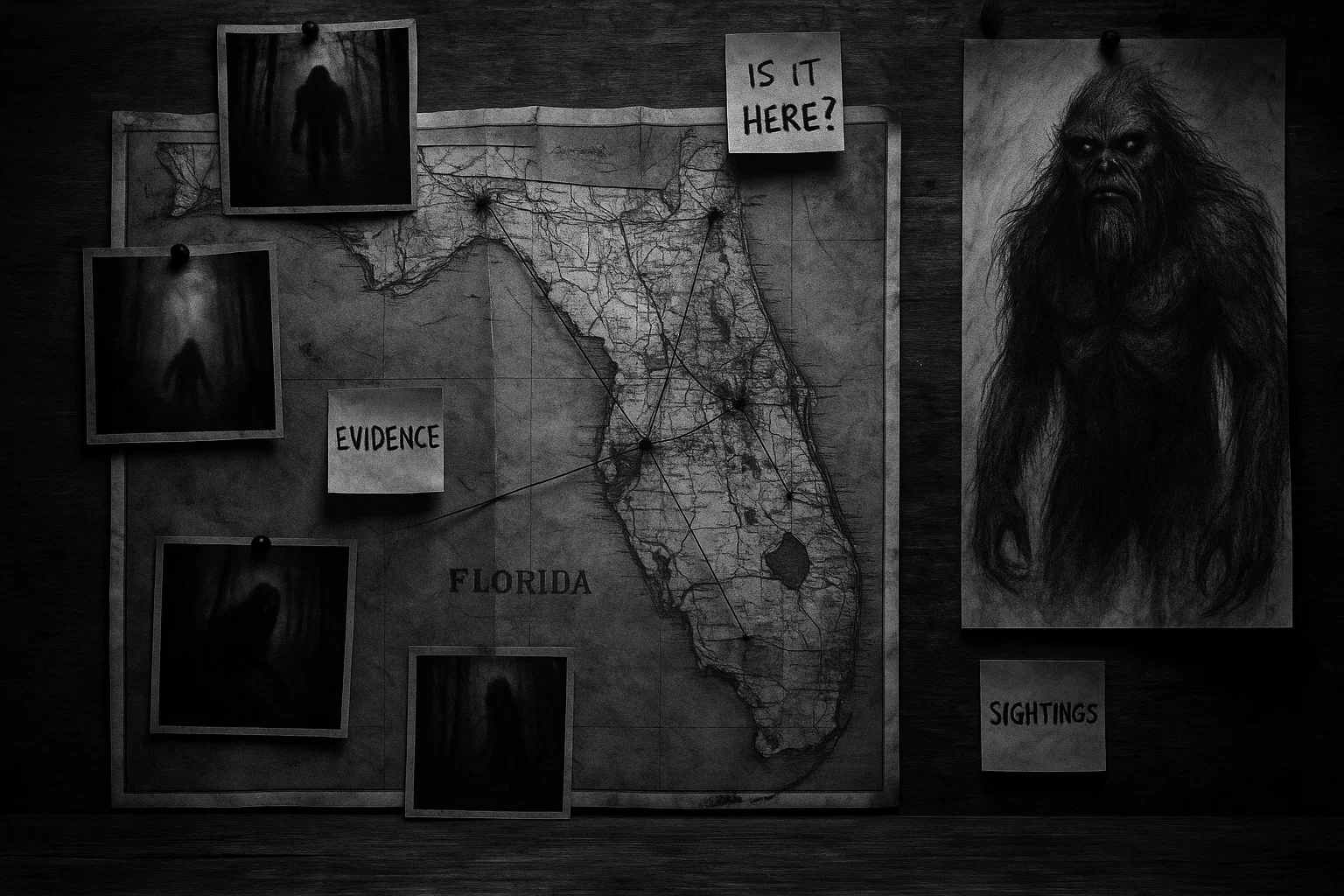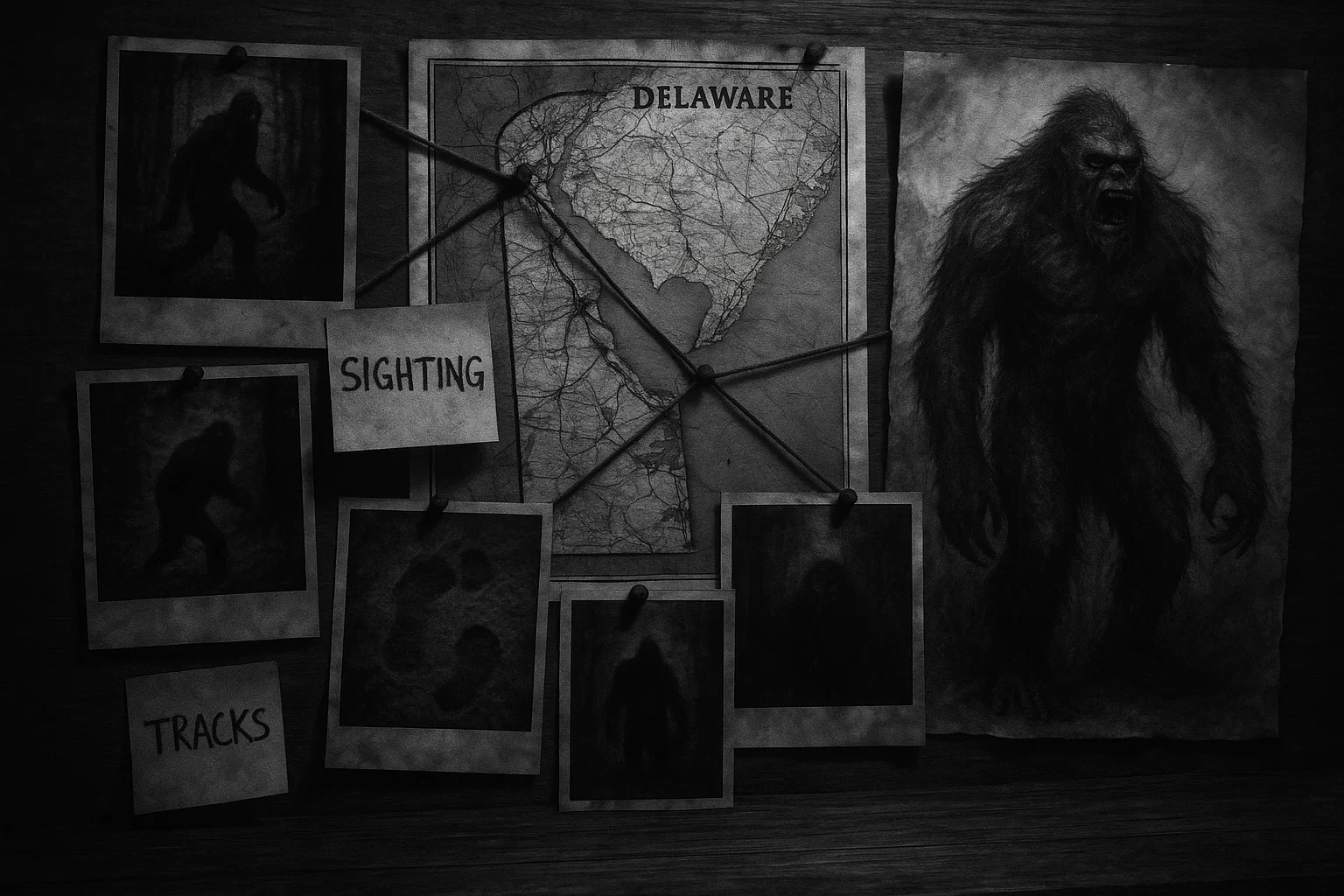Deep within the tranquil waters of Lake Manitoba, Canada, lies a mystery that has enthralled locals, adventurers, and cryptozoologists for over a century: Manipogo, the elusive lake monster.
Described as a serpentine creature with a humped body and a head resembling a horse, sheep, or camel, Manipogo has sparked countless tales, from First Nations legends to modern-day sightings.
Is this creature a surviving plesiosaur, a misidentified animal, or a product of folklore woven into the fabric of Manitoba’s cultural heritage? Is Manipogo real?
Table of Contents
What Is Manipogo?
Manipogo is a cryptid, a term coined by Manitoban John Wall to describe creatures whose existence is claimed but unverified by science. Reported to inhabit Lake Manitoba, a vast freshwater lake in Manitoba, Canada, Manipogo was named in 1957 by Tom Locke, drawing inspiration from British Columbia’s renowned lake monster, Ogopogo.
The earliest documented sighting dates to 1909, when Valentine McKay, a Hudson’s Bay Company fur trader, reported encountering a massive creature in Cedar Lake, near Lake Manitoba. Since then, Manipogo has become a cornerstone of Canadian folklore, celebrated through the annual Manipogo Festival in St. Laurent and immortalized in the naming of Manipogo Provincial Park.
The legend is deeply intertwined with Indigenous narratives, particularly among the Cree and Ojibwa peoples, who have shared oral traditions of serpent-like beings in Lake Manitoba for centuries.
These stories often portray the creature as a spiritual guardian of the lake, embodying the mystical connection between the land and its waters. Some accounts also mention Winnepogo, a similar creature reported in nearby Lake Winnipegosis or Lake Winnipeg, possibly the same entity due to the interconnected waterways of the region.
You May Also Like: Who is Andromalius, the Goetic Demon Who Punishes Thieves?
Despite its cultural significance, no definitive scientific evidence—such as fossils, clear photographs, or biological samples—supports Manipogo’s existence, leaving it a subject of fascination, debate, and skepticism.
Manipogo’s allure extends beyond folklore, influencing local culture and tourism.
The Manipogo Festival, held annually in early March, features events like ice fishing derbies and storytelling sessions, drawing visitors to St. Laurent to celebrate the mystery.
The creature has also appeared in media, including the TV series Northern Mysteries (Season 1, Episode 3) and John Kirk’s book In the Domain of Lake Monsters (1998), cementing its place in cryptozoology. While believers argue Manipogo could be an undiscovered species, skeptics attribute sightings to natural phenomena, keeping the debate alive.
What Does Manipogo Look Like?
Eyewitness accounts paint Manipogo as a serpentine creature, ranging from 12 to 50 feet (4 to 15 meters) in length, with a brownish-black or muddy-brown body that undulates through the water. Its most striking feature is the presence of one or more humps visible above the surface, suggesting a flexible, elongated form.
The creature’s head is described inconsistently, with some witnesses likening it to a horse, camel, or sheep, while others report a flat, diamond-shaped head.
A 1935 sighting by timber inspector C.F. Ross noted a single horn and a small, flat head, evoking comparisons to a dinosaur. In 1948, C.P. Alric described the creature rising 6 feet (1.8 meters) out of the water and emitting a “prehistoric type of dinosaur cry,” adding an auditory dimension to its mystique.
These varied descriptions fuel speculation about Manipogo’s identity. Some enthusiasts propose it could be a surviving plesiosaur, a prehistoric marine reptile with a long neck and humped body, or a basilosaurus, an ancient whale with a serpentine form.
However, skeptics argue that the inconsistent accounts—ranging from horned heads to sheep-like features—point to misidentifications of known animals like lake sturgeon, river otters, or swimming moose, or even natural objects like floating logs. The lack of consistent physical traits complicates efforts to classify Manipogo, making it a challenging puzzle for cryptozoologists.
Habitat: The Mystical Waters of Lake Manitoba
Manipogo is primarily associated with Lake Manitoba, the 13th largest lake in Canada and the 33rd largest globally, spanning approximately 4,624 square kilometers (1,785 square miles).
Located 75 kilometers (47 miles) northwest of Winnipeg, the lake is divided into a broad, shallow southern basin and a more irregular northern basin, connected by the Narrows, a strait named for the Cree term manitou-wapow or Ojibwa manidoobaa, meaning “straits of Manitou, the Great Spirit.”
The southern basin features a silty bottom with sandy or clay shorelines, while the northern basin has exposed bedrock, creating a diverse aquatic environment.
You May Also Like: Maple Hill Cemetery Haunting: Ghost Child Sightings and Eerie Legends
The lake’s ecosystem is rich, supporting boreal forests, wetlands like the Delta Marsh, and a variety of wildlife, including walleye, goldeye, and lake sturgeon, which can grow to 2.5 meters (8.2 feet) and weigh over 140 kilograms (310 pounds). Other species, such as moose, beavers, and river otters, are common and often cited as possible explanations for Manipogo sightings.
The lake’s shallow average depth of 7 meters (23 feet) and murky waters provide an ideal setting for myths, as they could conceal a large creature. Human activities, including commercial fishing, sport fishing, and tourism, thrive around the lake, with attractions like Manipogo Provincial Park on the northwestern shore drawing visitors.
Manitoba’s reputation as a hotspot for paranormal phenomena enhances the Manipogo legend. The term “cryptid” was coined by Manitoban John Wall, reflecting the province’s fascination with unexplained creatures. The Falcon Lake UFO incident of 1967, where Stefan Michalak reported burns from a UFO encounter in Whiteshell Provincial Park, is one of Canada’s best-documented UFO cases.
Haunted sites like Lower Fort Garry, where apparitions of a woman in white have been reported, and St. Boniface Church, known for disembodied red eyes and spontaneous organ music, add to the region’s mystique.
First Nations legends also describe other lake creatures, such as Winnepogo in Lake Winnipegosis, suggesting a broader tradition of aquatic serpents in the region’s folklore. While these phenomena are not directly linked to Manipogo, they contribute to Manitoba’s allure as a land of mystery.
The lake’s history includes environmental challenges, such as severe flooding in 2011, which displaced debris and likely contributed to sightings of “humps” mistaken for Manipogo.
The Narrows and areas like Toutes Aides and Meadow Portage are frequent sighting locations, possibly due to their narrow channels and abundant aquatic life. The interplay of natural features, cultural narratives, and paranormal lore makes Lake Manitoba a fertile ground for the Manipogo legend.
Manipogo Sightings
For over a century, Manipogo sightings have captivated the imagination, ranging from solitary glimpses to group observations.
| Date | Witness(es) | Location | Description |
|---|---|---|---|
| 1909 | Valentine McKay | Cedar Lake near Graves Point | Massive creature |
| 1935 | C.F. Ross and friend | Lake Manitoba | Creature with single horn, small flat head, dinosaur-like |
| 1948 | C.P. Alric | Lake Manitoba | Creature rose 6 ft, gave “prehistoric cry” |
| 1957 | Louis Breteche | Lake Manitoba | Serpentine animal, head lifted 3 ft, slapped water |
| 1957 | Louis Belcher and Eddie Nipanik | Lake Manitoba | Giant serpent-like creature |
| 1960s | Mr. and Mrs. Stople | Lake Manitoba | Reptile-like beast near boat |
| 1960s | 17-20 picnickers | Lake Manitoba | Three Manipogos swimming together |
| 1962 | Richard Vincent and John Konefell | Near Meadow Portage, Waterhen River | Large serpent or giant snake, photo taken |
| 1989 | Sean Smith and family | Shallow Point Campground | Many humps, 80 ft offshore |
| 1997 | Man from Sandy Bay First Nation | Lakeshore property | Claimed to kill 15-m creature (hoax) |
| 1997 | Campers from Quebec | Lundar Beach Provincial Park | Large reptile head, dismissed as log |
| 2004 | Keith Haden | Near The Narrows | Fishing nets torn, fish bitten, like shark/whale |
| 2009 | Residents at Twin Lakes Beach | Twin Lakes Beach | Several humps seen |
| 2011 | Multiple residents, security personnel | Marshy Point, Scotch Bay, Laurentia Beach | Something in water, likely logs |
| 2012 | Unknown | Off Twin Beach Road | Creature surfaced twice, scaled/sawtooth back like giant sturgeon |
1909 – Valentine McKay’s Encounter
In 1909, Valentine McKay, a Hudson’s Bay Company fur trader, reported seeing a massive creature in Cedar Lake near Graves Point, marking the first documented sighting by a non-Indigenous witness. McKay described a large, unidentified form moving through the water, sparking early interest in the lake’s mysteries.
1935 – C.F. Ross’s Dinosaur-Like Creature
Timber inspector C.F. Ross and a friend reported seeing a creature with a single horn and a small, flat head in Lake Manitoba. They likened it to a dinosaur, noting its serpentine body and unusual appearance, which fueled speculation about a prehistoric survivor.
You May Also Like: Battle House Renaissance Hotel Haunting: Room 552 Secrets
1948 – C.P. Alric’s Prehistoric Cry
In 1948, C.P. Alric witnessed a creature rising 6 feet (1.8 meters) out of Lake Manitoba, accompanied by a “prehistoric type of dinosaur cry.” The dramatic auditory element and the creature’s size made this one of the most vivid accounts, widely reported in local lore.
1957 – Louis Breteche and Others
Louis Breteche observed a serpentine animal lifting its head 3 feet (0.9 meters) out of the water and slapping it down, creating a splash. In the same year, Louis Belcher and Eddie Nipanik reported a giant serpent-like creature, reinforcing the creature’s consistent serpentine description.
1962 – Richard Vincent and John Konefell’s Photograph
On August 12, 1962, fishermen Richard Vincent and John Konefell spotted a large, serpent-like creature 70 yards from their boat near the Waterhen River mouth in Lake Manitoba. Vincent captured a blurry photograph, the only known image of Manipogo, showing a humped, snake-like form. The photo, published in local newspapers, remains controversial, with skeptics arguing it depicts a log or bent branch due to the absence of a wake.
1989 – Sean Smith’s Family Sighting
Sean Smith and his family, visiting from Minneapolis, reported seeing “many humps” about 80 feet (24 meters) offshore at Shallow Point Campground off highway No. 6. The sighting, in calm waters, added to the creature’s reputation for appearing in shallow areas.
2004 – Keith Haden’s Fishing Net Incident
Commercial fisherman Keith Haden reported torn fishing nets and fish bitten in half near The Narrows, suggesting a large, powerful predator. He compared the damage to that caused by a shark or killer whale, though no such creatures inhabit Lake Manitoba, prompting speculation about Manipogo.
1960s – Mass Sighting by Picnickers
A group of 17 to 20 picnickers claimed to see three Manipogos swimming together, an unusual report suggesting multiple creatures. This prompted an investigation by Professor James A. McLeod, though no evidence was found.
1997 – Sandy Bay Hoax
A man from Sandy Bay First Nation claimed to have shot and killed a 15-meter (49-foot) snake-like creature with a horse-like head. The story, initially sensational, was debunked as a hoax by the RCMP and researchers like Loren Coleman.
2011 – Flooding Sightings
During severe flooding in 2011, multiple residents and security personnel reported “something” in the water at Marshy Point, Scotch Bay, and Laurentia Beach. These sightings were likely logs or debris displaced by floodwaters.
Media Coverage and Documentation
Manipogo sightings have been covered in various media, including local newspapers like the Winnipeg Free Press and Winnipeg Sun, which reported on the 1962 photograph and the 1997 hoax.
You May Also Like: The Curse of Nam Koo Terrace | Horror Story
The CBC News published an article in 2018 detailing the history of Manipogo and its cultural significance. The TV series Paranormal Portals (2004) featured an episode on Manipogo, directed by William Burke and Larry Santos, highlighting its place in Manitoba’s monster lore.
No official government documents, such as RCMP reports beyond the 1997 hoax investigation, are publicly available, but the Centre for Fortean Zoology has described Manitoba as a “wonderland for cryptids,” noting its rich history of unexplained phenomena.
Evidence and Investigations
The evidence for Manipogo’s existence is limited and heavily debated. The 1962 photograph by Richard Vincent and John Konefell, taken near the Waterhen River mouth, is the only visual record, showing a serpentine form with humps.
However, skeptics, including Chris Rutkowski, a Winnipeg-based science writer, argue it likely depicts a log or bent branch, as it lacks a visible wake, which would indicate a living creature moving faster than a 10 HP motorboat. The photo’s blurriness and lack of context further undermine its credibility.
In the early 1960s, Professor James A. McLeod of the University of Manitoba led a scientific investigation, exploring caves and crevasses in Lake Manitoba for physical remains like carcasses, bones, or fossils that might indicate a breeding population. His team found no evidence, and a supposed vertebra discovered was later discounted as not belonging to an ancient sea beast.
A 1960 mass sighting by 17 to 20 picnickers, who claimed to see three Manipogos swimming together, prompted further investigation by McLeod and Siggi Oliver of the Provincial Fish and Game Department, but no conclusive findings emerged.
Skeptical explanations for Manipogo sightings include:
- Floating Logs: Partially submerged debris can mimic a humped creature, especially in murky waters or during flooding, as seen in 2011.
- River Otters: Groups of otters swimming in a line can create the illusion of a larger, undulating creature.
- Swimming Moose: Moose, common in Manitoba, swim with their heads and humped backs above water, and their grunting or bleating sounds may be mistaken for a monster’s cry.
- Lake Sturgeon: Native to Lake Manitoba, sturgeon can grow to 2.5 meters and weigh over 140 kilograms, with some capable of “tail walking” on the surface, resembling a serpentine form.
- Optical Illusions: Reflections, waves, or shadows in the lake’s shallow waters can create misleading shapes.
The 1997 hoax, where a Sandy Bay First Nation resident claimed to have killed a 15-meter creature, was investigated by the RCMP and cryptozoologist Loren Coleman, who confirmed it as a practical joke.
No biological samples, such as scales, teeth, or DNA, have been recovered, and the absence of clear photographs or videos further weakens the case for Manipogo’s existence.
Chris Rutkowski, with over 30 years of research at the Ufology Research Centre, notes that while the mystery adds intrigue to life, the lack of empirical evidence points to natural explanations.
Scientific Hypotheses
Plesiosaur Theory: Some enthusiasts suggest Manipogo could be a surviving plesiosaur, a prehistoric marine reptile with a long neck and humped body. However, the absence of fossil evidence in Lake Manitoba and the lake’s relatively recent geological formation (post-Ice Age) make this unlikely.
Basilosaurus Hypothesis: Comparisons to basilosaurus, an ancient whale with a serpentine body, have been proposed due to Manipogo’s humped appearance. Yet, basilosaurus was a marine species, and Lake Manitoba’s freshwater environment is unsuitable.
You May Also Like: El Silbón: Why Locals Say Its Whistle Means Death Is Near
Misidentification: The most plausible explanation, supported by scientists, is that sightings result from misidentifications of sturgeon, otters, or moose, compounded by optical illusions or cultural expectations of a monster.
The scientific consensus leans heavily toward skepticism, emphasizing the need for tangible evidence to confirm Manipogo’s existence. The lake’s ecological constraints, such as its shallow depth and lack of a sustainable food source for a large predator, further challenge the possibility of an undiscovered species.
Comparison With Other Similar Cryptids
Manipogo is part of a global phenomenon of lake monsters, sharing traits with other aquatic cryptids reported in lakes and rivers worldwide:
| Cryptid | Location | Description | First Sighting | Notable Sightings |
|---|---|---|---|---|
| Ogopogo | Okanagan Lake, BC, Canada | 40-100 ft, dark green, humps, horse-like head | 1872 | Numerous, photos, videos |
| Loch Ness Monster | Loch Ness, Scotland | Long-necked, 20-40 ft, dark, humps | 6th century | 1934 photo (debunked), frequent sightings |
| Champ | Lake Champlain, USA/Canada | 15-50 ft, dark gray, humps | 1609 | Multiple sightings, some photos |
| Memphre | Lake Memphremagog, Canada/USA | 20-40 ft, dark, humps, horse-like head | 1816 | Several sightings, recent reports |
| Igopogo | Lake Simcoe, Ontario, Canada | 15-30 ft, dark, canine-like head | 1952 | Few sightings, mostly historical |
| Cressie | Crescent Lake, Newfoundland, Canada | 20-40 ft, dark, humps | 1951 | Limited sightings |
| Bessie | Lake Erie, USA/Canada | 30-40 ft, dark, humps | 1793 | Several sightings over centuries |
| Paddler | Lake Leelanau, MI, USA | 20-30 ft, dark, humps | 1870s | Few sightings |
| South Bay Bessie | Lake Huron, USA/Canada | 30-40 ft, dark, humps | 1934 | Several sightings, some recent |
| Mussie | Muskrat Lake, Ontario, Canada | 20-30 ft, dark, humps | 1940s | Sporadic sightings |
| Ponik | Lake Pohenegamook, Quebec, Canada | 20-40 ft, dark, humps | 1874 | Few sightings, historical |
| Winnipogo | Lake Winnipegosis, Canada | 15-40 ft, dark, humps | 1910s | Few sightings, possibly same as Manipogo |
These cryptids share serpentine forms, aquatic habitats, and descriptions involving humps and varied head shapes, often likened to plesiosaurs or ancient whales.
Like Manipogo, most lack conclusive evidence, with sightings attributed to misidentifications, hoaxes, or folklore. Their persistence reflects humanity’s fascination with the unknown, amplified by cultural narratives and media coverage.
Is Manipogo Real?
The question of Manipogo’s existence remains unresolved. The 1962 photograph, the only physical evidence, is widely dismissed as a log or debris due to its lack of clarity and absence of a wake.
Scientific investigations, such as James A. McLeod’s search for remains, found no evidence of a breeding population, and ecological constraints—such as Lake Manitoba’s shallow depth and limited food supply—make a large predator unlikely.
Plausible explanations, including floating logs, river otters, swimming moose, and lake sturgeon, account for most sightings, while First Nations legends add cultural depth but lack empirical support.
Despite the lack of evidence, Manipogo’s legend thrives, fueled by the Manipogo Festival, local storytelling, and the allure of Lake Manitoba’s murky depths. The creature’s story, featured in media like Paranormal Portals and Northern Mysteries, embodies the human desire to explore the unknown.
Whether a real creature or a cultural phenomenon, Manipogo remains a captivating mystery, inviting both believers and skeptics to ponder the secrets hidden beneath the waves.


